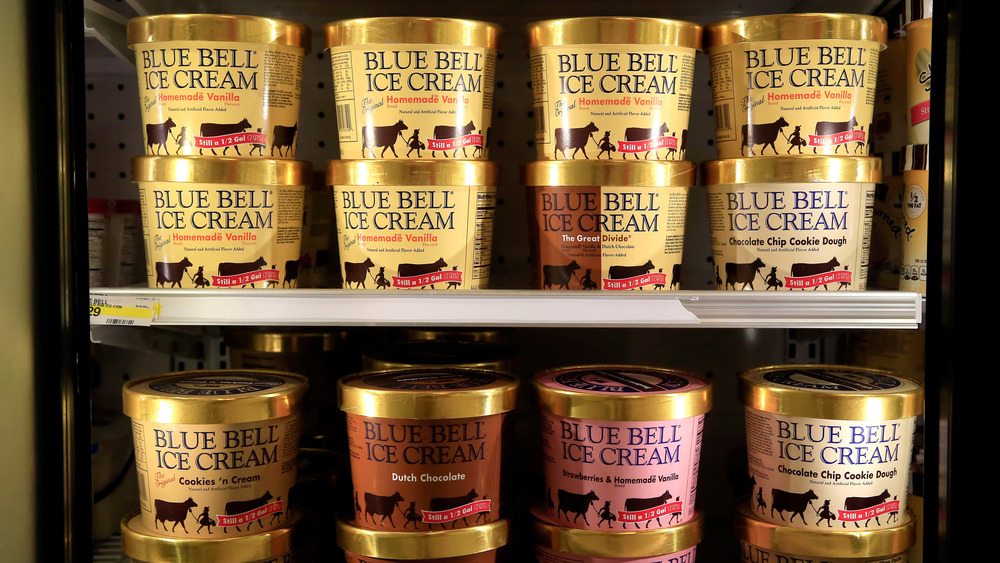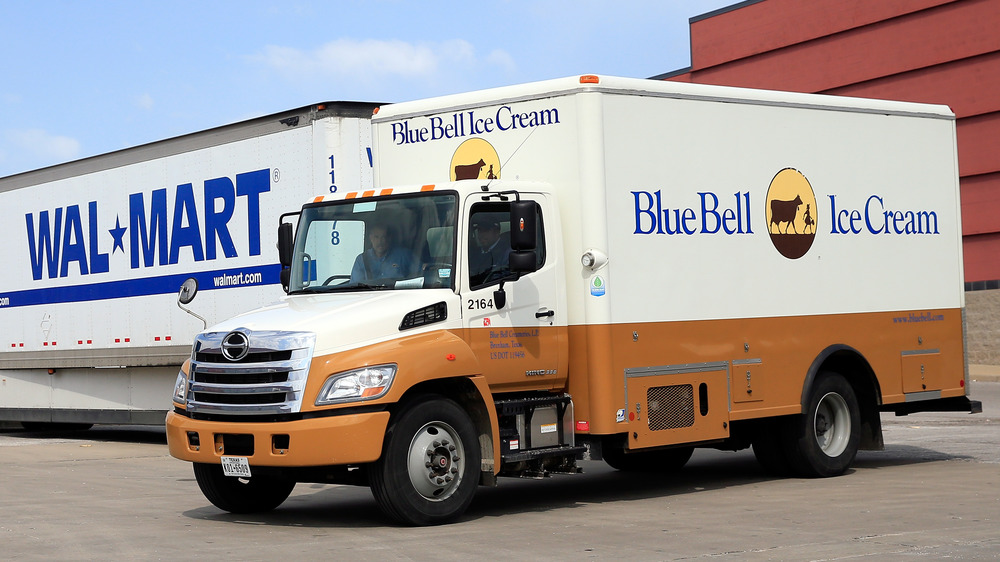Everything You Need To Know About The Blue Bell Ice Cream Black Market
The food world has a seedy underbelly full of mobsters, fraudsters, elaborate heists, and shadowy transactions. For instance, Yahoo Entertainment reported in 2016 that over the course of six months, thieves in California made off with more than 30 truckloads of pecans, cashews, pistachios, almonds, and walnuts that were worth an estimated $10 million. In a 2013 scandal that the Guardian described as "the biggest food fraud of the 21st century," organized crime was implicated in stocking UK grocery stores with tens of millions of "beef" burgers that were 29 percent horse meat. Perhaps nuttier than cashew theft and grosser than a grocer's horse patties, in 2015, potentially tainted and seemingly half-eaten ice cream was peddled on the black market.
If the words "Listeria outbreak" ring a bell, it's probably a Blue Bell, the Texas-based ice cream brand that the Department of Justice slapped with an unprecedented $17.25 million fine for food safety violations. Decaying factory locations dripped unclean water onto Blue Bell ice cream, fostering Listeria, which can be lethal to people with weakened immune systems, pregnant women, babies, and the elderly. Three people in Kansas died after eating the ice cream (via CBS News), and another 10 fell ill in four states.
Texas officials had warned Blue Bell about the Listeria in February 2015, but the company waited until March to recall bad batches and warn customers. After Blue Bell sounded the alarm bell, black market sellers emerged in response.
Black and Blue Bell
The black market markups for Blue Bell ice cream reached obscene heights and new lows simultaneously. Reuters reported that a Craigslist user tried to sell an unopened pint of Krazy Kookie Dough for $10,000. As documented by reporter Jeff Paul, one would-be profiteer advertised half-eaten Homemade Vanilla for $500. "No listeria," alleged the seller. "(I ate the first half and I'm still here). I am willing to sample the blue bell in front of legitimate buyers."
The Washington Post noted that one seller expressed willingness to barter, offering a half-eaten pint of vanilla for a Corvette Stingray, a home in Hyde Park, or $2,000. Another ambitious seller touted a $4,000 "mother lode" – partially eaten gallons of ice cream that supposedly predated the recall. But anyone who miraculously trusted Blue Bell enough to consult its website would have noticed that the company cautioned against eating its products, suggesting instead that customers seek a refund.
One can only hope most of these laughable offers were jokes. Even so, they raise some serious questions. For example, unless the ice cream's unopened, how would a buyer know the seller didn't just place a different brand in a Blue Bell container? Was the used ice cream eaten straight from the container with a single slobbery spoon or just scooped into the sink and falsely advertised as eaten? And why in the blue hell would Blue Bell be worth that much to anyone?

